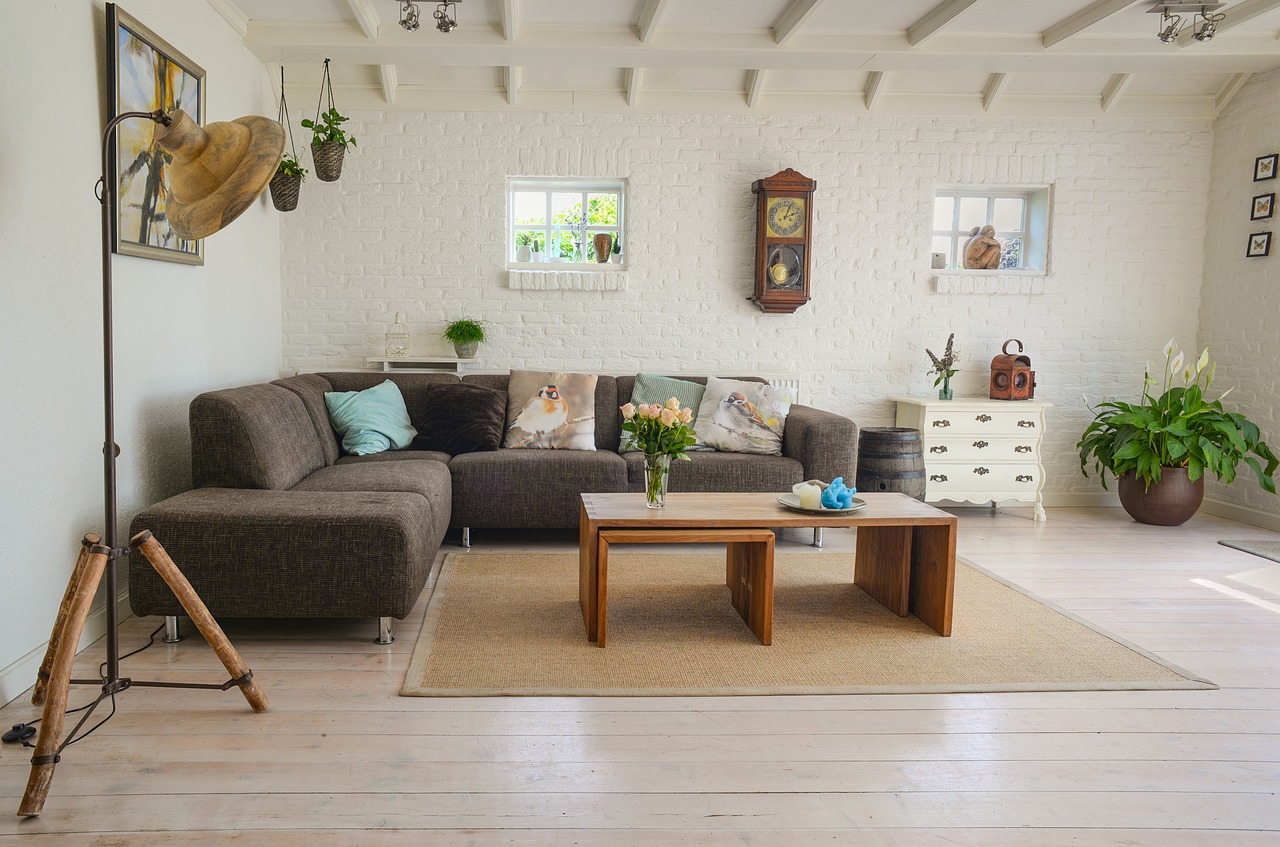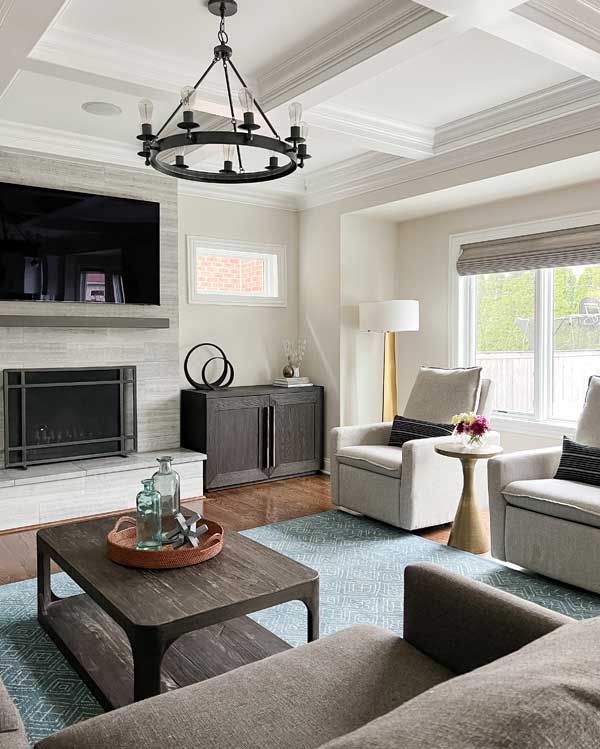The interior design industry is thriving, thanks to increasing demand for personalized spaces, technological advancements, and a growing emphasis on sustainability. It takes more than choosing colors for furniture and walls to design a space. When property owners need to transform their spaces, enhance functionality, or create a specific aesthetic, they turn to interior designers.
Key Interior Design Industry Statistics
As the interior design industry continues to evolve, it helps to know some design facts and statistics to gain insights into consumer behavior, the latest trends, and the industry’s economic prospects. They also help provide an overview of the market dynamics.
Additionally, analyzing these numbers helps businesses, designers, and investors make informed decisions. It shows where to focus efforts, such as targeting certain demographics or adopting new trends. It also highlights emerging market opportunities to take advantage of.
Interior Design Market Size And Growth
The global home decor market revenue reached $696.4 billion in 2023 and is expected to grow as we enter 2025. Some estimates predict the interior design services industry will grow to nearly $1 trillion by 2033. That is a staggering Compound Annual Growth Rate (CAGR) of 3.6%. According to the Bureau of Labor Statistics, the job market for the interior design profession will grow at the rate of 4%. The growth also means a more competitive landscape for the interior design market.
A key driver for this growth is the growing influence of e-commerce platforms making home decor products more accessible. The ongoing trend of remote work has made workers more conscious of their environment at home, and they are more likely to invest in interior design.

The rise in personal and disposable income is another factor driving demand. Based on the latest numbers, personal income increased by $57.4 billion (0.3%). With more money available, individuals are more inclined to spend on home decor and interior design.
Demographics
More than 80% of interior designers are women. However, an increasing number of men are also venturing into this field.
In the United States, 73% of designers across all disciplines in the United States identify as white caucasian, despite comprising only 60.1% of the population at large, per Census Bureau stats. Black people account for 13.4% of the general population but only 5% of designers, and 18.4% of U.S. residents who identify as Hispanic represent only 3% of designers.
As the country embraces more diversity, we can expect more interior designers from other ethnicities and cultural backgrounds. This could help the industry grow as these individuals bring new perspectives, design aesthetics, and cultural influences that reflect the diverse population.
Do you expect an interior designer to be a young person’s game? Well, that’s not the case, as statistics show that most interior designers are middle-aged. This lower average age suggests that interior designers have gained their skills and knowledge through experience.
Regional Insights
On a global scale, the North American and European markets have dominated the market share for the interior design market. However, the Asia-Pacific market for interior design is rising sharply and is expected to have a CAGR of 5.1% from 2024 to 2030.
In terms of segment, this region has the largest revenue generated in interior design for new residential construction. This growth is driven by urbanization and rising incomes in countries like China. A preference for modern, sustainable designs is also fueling demand. Government-backed infrastructure projects further support the market.
Generally, the highest revenue for interior design companies comes from metropolitan cities. The luxury design is naturally included in rich suburbs. Coastal regions in New York, Florida, and California are at the forefront of luxury and high-end interior design. Residents from more developed cities also tend to prefer eco-friendly materials and energy-efficient designs. In the Midwest, practical and budget-conscious designs dominate. This is a reflection of the region’s lower average household spending on interior projects compared to coastal states.

Consumer Spending
Understanding consumer spending on interior design and home improvement is crucial for gauging market trends and making informed decisions. The statistics show that spending on home improvements and repairs in the US surged by 81% from 2014 to 2023. This increase can be attributed to factors such as rising property values, increased homeownership, and the growing desire to upgrade living spaces. However, a decrease is expected in consumer spending due to economic uncertainty and the overall slowdown in the housing market.
Consumers often get the best return on investment in interior designs related to the kitchen, bathrooms, and outdoor spaces. For example, a kitchen remodel can return up to 80% of the investment, while bathroom renovations can see an ROI of around 70%. However, these numbers can vary depending on several factors such as location, the scale of the project, and the quality of materials used.
Design Trends
Consumer preferences keep evolving. What is trending today, might not be trending next year. In 2024, we saw an increase in demand for sustainability and functionality. Interestingly, we see more of an intersection between fashion and interior design. Many luxury fashion brands offer interior design items.
According to a survey of 16 interior designers by Vogue, “quiet luxury” is trending in 2024 where classier brands are more in demand compared to the flashier luxury brands. The survey also highlighted other design trends for 2024, including vintage lighting, chain pantries, stripes, glass bricks, and dark wood-paneled walls. Marble accessories and one-of-a-kind pieces are also in demand this year.
According to an article published on Business Insider, fast furniture isn’t holding up. This includes interior design items such as ready-to-assemble or flat-pack pieces from large chains. Consumers are starting to prefer more durable, long-lasting furniture instead of cheaper, mass-produced options. As a result, many are turning to custom and high-quality brands that focus on sustainability and craftsmanship. This shift reflects a growing concern for the environment and the desire for pieces that will last, even if it means spending more upfront.
Analysis of Current Trends in Interior Design
The trends in interior design for 2024 indicate an increasing demand for aesthetics across the US and global markets. According to Global Market Insights, the industry is estimated to be as large as $134 billion in 2023 but is estimated to rise significantly.
While North America has around $44 billion share of the global market, emerging regions such as China and India are expected to gain more market share in the coming years. The Asian Business Journal estimates a 9% CAGR for the Asia-Pacific region. Consumers are becoming increasingly conscious of their environment and understand the value of investing in interior design. Not only are they looking to enhance their living and workspace, but they’re also looking to play their role in promoting sustainability.
Technology is also trending upwards, as property owners are looking to leverage the latest tech to maximize functionality and convenience, as well as improve their energy efficiency. For example, property owners are incorporating smart home systems, such as automated lighting, voice-controlled devices, and temperature regulation, to enhance daily living experiences.
It’s worth noting that only 9% of interior designers are currently employing artificial intelligence (AI) in their workflows. We can expect this number to rise significantly as designers become more comfortable using AI tools. The tools should also get more user-friendly, increasing the adoption rate.
The average spending on interior design for a typical US household is estimated to be around $5,500. Some of this spending will go toward the increasing trend of eco-friendly materials such as reclaimed wood, bamboo, and recycled textiles. Four out of every ten millennials (43%) prefer eco-friendly or sustainable design. Multifunctional furniture and open-plan layouts continue to dominate, driven by the demand for flexibility in modern homes.
Sixty-three percent of consumers prefer minimalist designs. While minimalist designs have been trending for a while, overdoing it might not be practical. After all, the primary function of designing and decorating your place is to have functionality based on your needs. A better alternative is to embrace a more balanced minimalism that still allows for functionality and comfort.

The Future of Interior Design
Interior design is set for transformative growth and evolution over the next few years. This is driven by the rapid advancements in technology, including the rise of generative artificial intelligence (GenAI). Interior designers are now equipped with various software tools that empower them to create highly customized design concepts.
The global interior design software market is expected to cross $8 million by 2025. This growth shows that more designers are turning to digital tools to improve their work. These tools help create better designs, present ideas more clearly and keep designers competitive in a fast-evolving market.
Luxury listings are only growing at about 3%, down from double-digit figures from summer 2023. This presents both challenges and opportunities for interior designers. With fewer high-end properties available, designers may need to focus on unique and personalized designs for a smaller group of wealthy clients. This shift could also encourage designers to offer more creative and cost-effective solutions to attract buyers or homeowners wanting to upgrade their spaces.
To learn more about how the interior design market is evolving, contact us at Dara Agruss Design. We offer a comprehensive range of interior design services, including specialized design services. This includes kitchen design, new home design, home office design, bedroom design, and more. When it comes to interior design, our team can guide you through the unique benefits of each approach. Reach out to us today to explore our interior design services and turn your ideas into reality.
